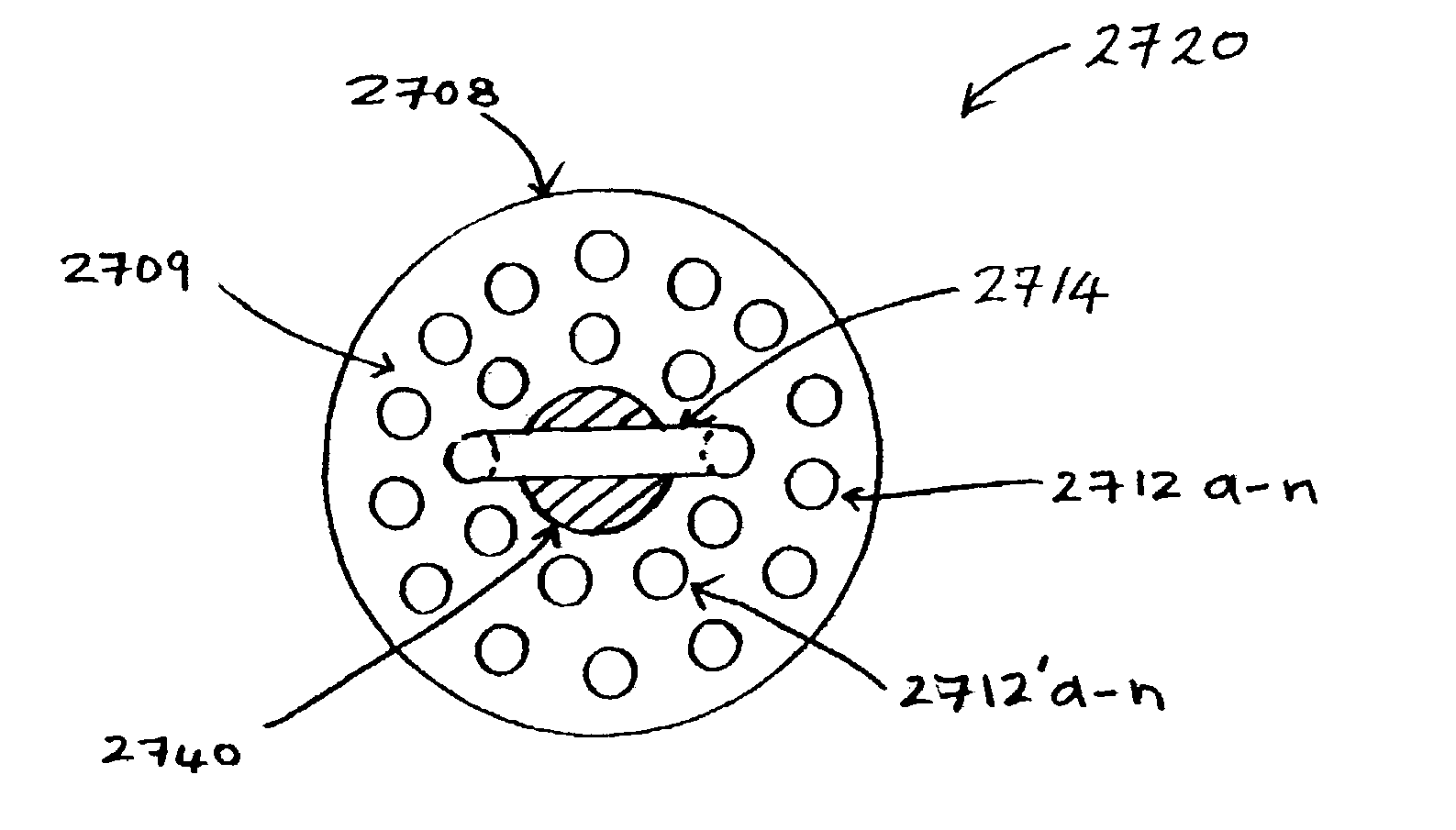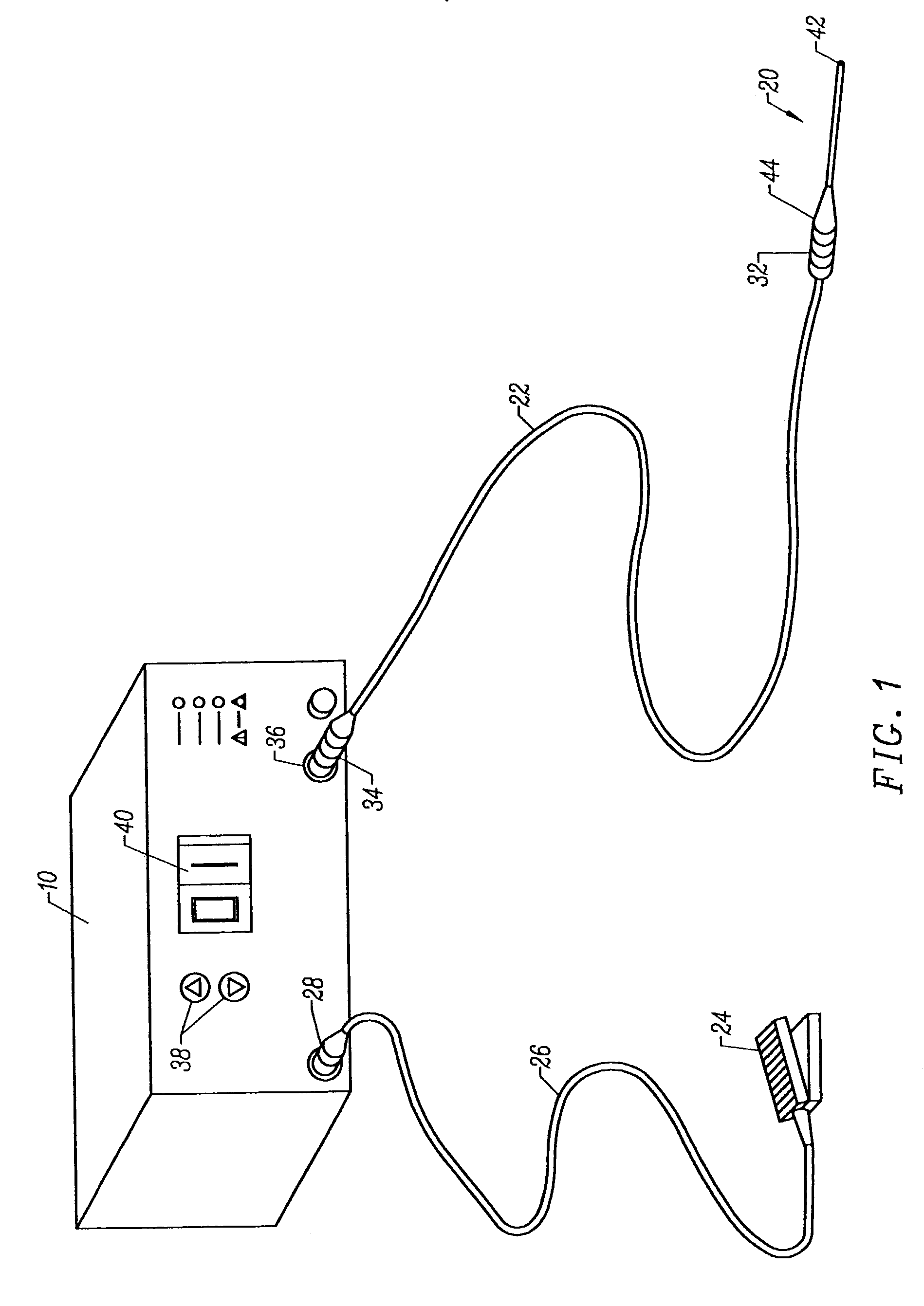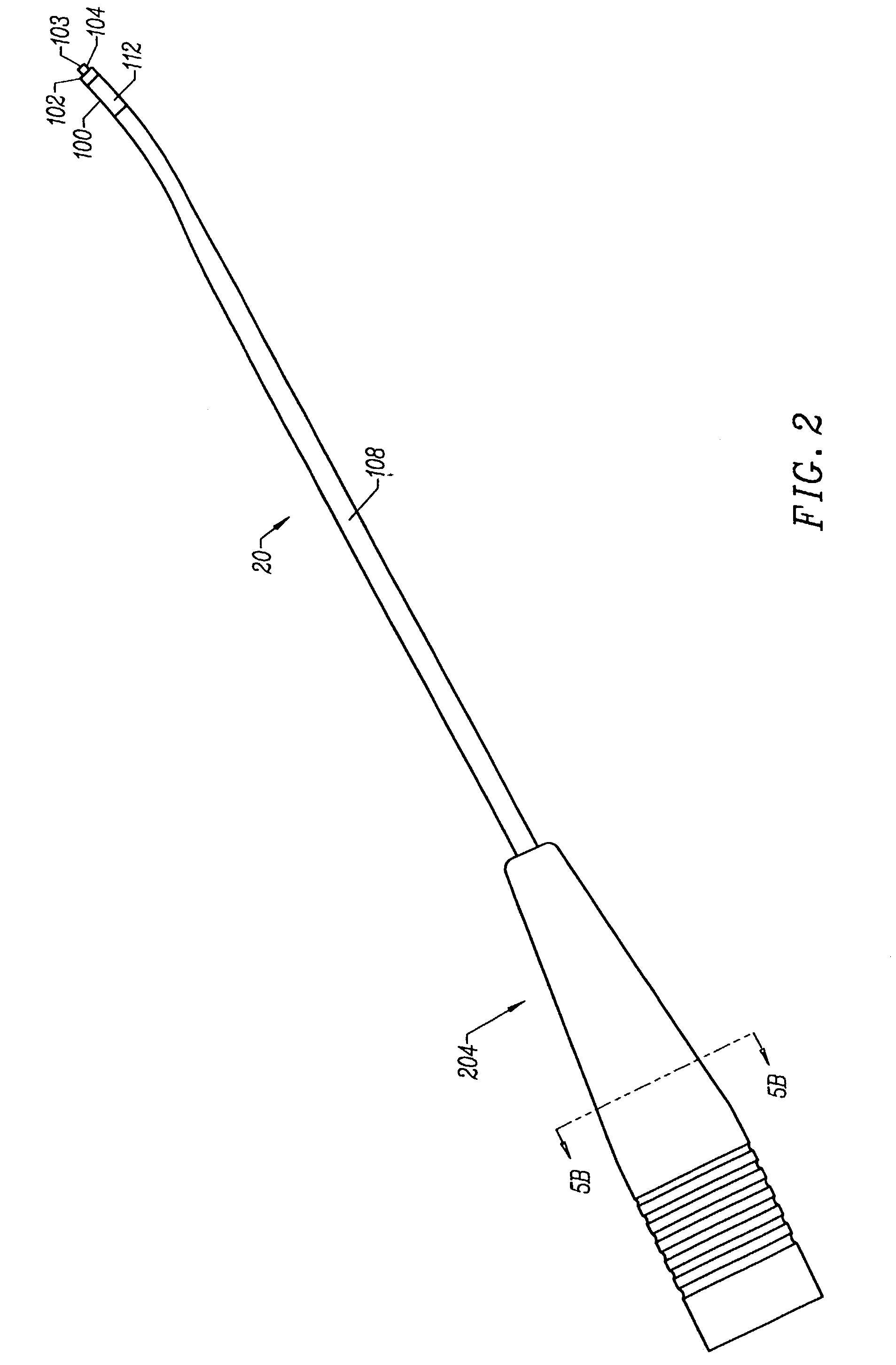Electrosurgical probe having circular electrode array for ablating joint tissue and systems related thereto
a technology of electrode array and electrode array, which is applied in the field of electrosurgical probes, can solve the problems of tissue desiccation or destruction at the contact point of the patient's tissue, the damage or destruction of the electrode array, and the suffering of the electrode surgical device and procedure, etc., and achieves the effects of low aspiration rate, low ablation rate, and high aspiration ra
- Summary
- Abstract
- Description
- Claims
- Application Information
AI Technical Summary
Benefits of technology
Problems solved by technology
Method used
Image
Examples
Embodiment Construction
[0143]The present invention provides systems and methods for selectively applying electrical energy to a target location within or on a patient's body. The present invention is particularly useful in procedures where the tissue site is flooded or submerged with an electrically conductive fluid, such as arthroscopic surgery of the knee, shoulder, ankle, hip, elbow, hand or foot. In addition, tissues which may be treated by the system and method of the present invention include, but are not limited to, prostate tissue and leiomyomas (fibroids) located within the uterus, gingival tissues and mucosal tissues located in the mouth, tumors, scar tissue, myocardial tissue, collagenous tissue within the eye or epidermal and dermal tissues on the surface of the skin. Other procedures for which the present invention may be used include laminectomy / discectomy procedures for treating herniated disks, decompressive laminectomy for stenosis in the lumbosacral and cervical spine, posterior lumbosac...
PUM
 Login to View More
Login to View More Abstract
Description
Claims
Application Information
 Login to View More
Login to View More - R&D
- Intellectual Property
- Life Sciences
- Materials
- Tech Scout
- Unparalleled Data Quality
- Higher Quality Content
- 60% Fewer Hallucinations
Browse by: Latest US Patents, China's latest patents, Technical Efficacy Thesaurus, Application Domain, Technology Topic, Popular Technical Reports.
© 2025 PatSnap. All rights reserved.Legal|Privacy policy|Modern Slavery Act Transparency Statement|Sitemap|About US| Contact US: help@patsnap.com



